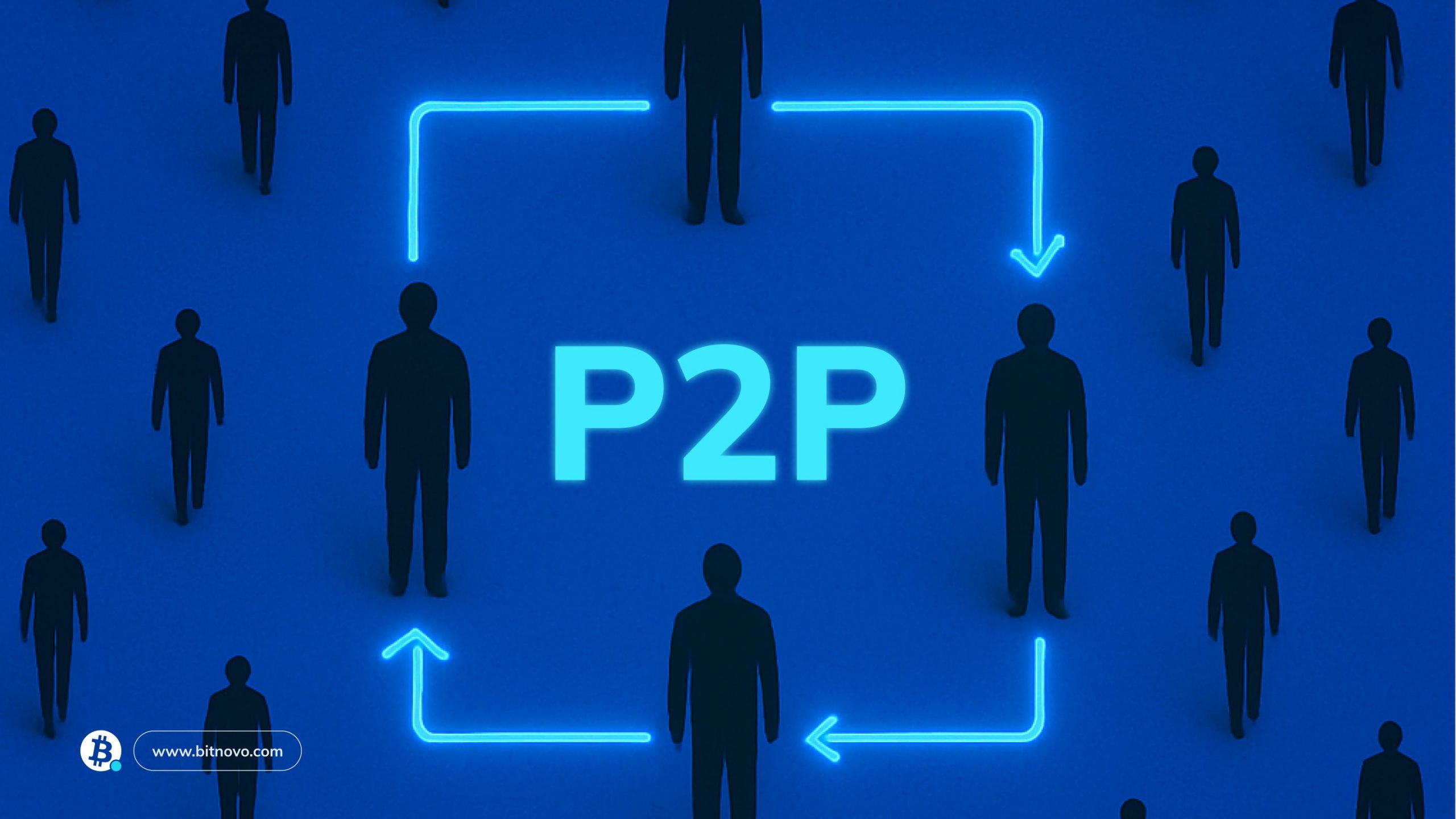
Table of Contents
ToggleCurrently, the crypto sector is booming, but there is much more to learn besides Bitcoin. A key concept you should know is what peer-to-peer is.
Broadly speaking, a peer-to-peer network, also known as a peer-to-peer network, is a type of computer structure where participants connect and share information with each other. This information is shared directly and decentralized, since there is no central server that acts as an intermediary. This form of organization contrasts with the traditional client-server model. In this, one requests services or data (client) and the other provides them (server).
Network participants are called “nodes” and each of them has a certain level of authority. These will be able to send and receive information and resources depending on their capabilities.
With this architecture, current networks are more democratic, resilient and scalable than traditional ones. This is because total control is not concentrated in a single point, but is equally distributed among all.
How does a peer-to-peer network work?
The most important thing in this system is to understand its operation. A peer-to-peer network works through direct connection between nodes. In this type of network, each node acts as a sender and receiver of data.
This means that network participants do not depend on a single data sender to exchange information. Instead, they communicate with each other following a common protocol. To better understand it, we will give an example; If two people use a P2P application to send information, both devices will connect directly, without going through a central server. Between them they will be able to send and receive information directly, and most importantly, without intermediaries.
If someone has the prominence in this system, it is the nodes. Each node has the ability to share and process information. Some may have different functions (such as validating transactions) or only act as receivers. It can be said that this flexibility is what has made this model such a useful system.
Pure vs. hybrid architecture
It is important to note that within the peer-to-peer system there are two types of architectures. These are pure and hybrid. Each one is useful depending on what you want to achieve.
On the one hand, we have pure P2P. In this model, all nodes have the same functions and tasks. There is no server that coordinates or supervises its activity. Each node connects directly with others, managing its own information and actively participating in the network. The charm of this type of architecture lies in the high level of decentralization and resistance to censorship.
On the other hand, we have hybrid P2P networks. This name comes from the fact that a not-so-decentralized aspect is introduced. It is a server or search index that facilitates the tasks of the nodes. It should be noted that this does not imply at all that it is totally centralized. The actual exchange of data is still done between peers. In this way, decentralization and accessibility are balanced.
With these models, networks can adapt to each context, from fully decentralized networks, such as Bitcoin, to networks that need a certain coordination to improve the user experience.
History and evolution of P2P networks
It is very common for this concept to be directly associated with cryptocurrencies, however, it is a mistake. Peer-to-peer networks already existed before. Specifically, since the early years of computing.
To get to the origin of this system, we have to travel to the 1980s, when the development of the UUCP protocol or (Unix-to-Unix Copy Protocol) began. This protocol allowed two Unix machines to communicate with each other to share files and messages remotely. All this without the need for a centralized network or Internet connection.
The technological leap came in 1999 with the development of Napster. Its system made the exchange of musical files between peers viral. Napster’s architecture was not entirely decentralized, rather hybrid, but it marked a before and after. More networks such as Gnutella, Kazaa or eMule were developed. Finally, in 2001 BitTorrent was launched. This network was a total change in the efficiency of file distribution, dividing them among multiple nodes.
In 2008 Bitcoin arrived, taking the P2P model much further. It was no longer just about file sharing, now P2P networks could be implemented in the financial world. Bitcoin proposed a financial network without intermediaries, decentralized and backed by blockchain technology. This gave rise to current networks such as Ethereum, DEX or DeFi. Now P2P networks are in all aspects, from the most classic like music to the most modern, which is digital money.

Examples of peer-to-peer networks in real life
Despite what it seems, the peer-to-peer model is not only oriented to technical ideas. These networks are already implemented in tools that we use daily without realizing it. These are some examples that stand out in the use of peer-to-peer networks:
– File sharing platforms: Tools such as BitTorrent and eMule allow you to download files from multiple sources simultaneously. They do not depend on a single server, since the file is divided into parts distributed among users. For this reason they are faster and avoid what is called “bottleneck”
– Communication applications such as Skype or WhatsApp. Both have used P2P elements to establish direct calls or file transfers between devices.
– Cryptocurrencies and blockchain. Examples such as Bitcoin or Ethereum could not be missing from the list. Both are decentralized networks that work without intermediaries and without banking entities.
– Economy. Although many collaborative economy platforms are now mostly centralized, they still retain P2P elements in their operations. As an example we have Uber or Airbnb.

Advantages and disadvantages of peer-to-peer networks
Peer-to-peer networks are known for their ability to offer more decentralized, efficient, and resilient solutions compared to traditional models. However, not everything is rosy, and there are several key aspects that we need to keep in mind.
Advantages
- Decentralization: They do not depend on a central entity, so control is distributed among all nodes. This makes them resistant to censorship and service interruptions.
- Reduced costs: Intermediaries are eliminated, and the need for centralized structures is reduced. This results in lower maintenance costs.
- Privacy and control: Users have greater control over their data and activity.
- Scalability: The more nodes participate in the network, the stronger it becomes. Therefore, the possibility of scaling increases without making large investments.
Disadvantages
- Security and malware: We are talking about open and distributed networks. The possibility of malicious software spreading is not null if verification and control systems are not applied.
- Legal and licensing issues: Files can be shared anonymously and without supervision. This clouds the possibility of preventing the distribution of copyrighted content.
- Efficiency and resource management: In networks without clear hierarchies, resource management is sometimes less efficient. If many nodes disconnect, performance can be affected.
Why are peer-to-peer networks important today?
These networks have ceased to be just a curiosity or a mere technological invention to become a key piece not only in the economy but in daily life. The ability of these networks to eliminate intermediaries, distribute control among users, and adapt to different contexts makes them essential in numerous sectors. Among them, decentralized finance, digital communication, and data storage stand out.
Currently, the most important innovations for the future are based on this economy, and you can see it in any aspect. From Bitcoin to DAOs or any app in your daily life. Decentralized networks are everywhere, and they have come to stay and evolve.
If you want to continue learning about decentralized technology and cryptocurrencies, you can explore all the resources on the Bitnovo blog. There you will find guides like these on blockchain, Bitcoin, and much more!




